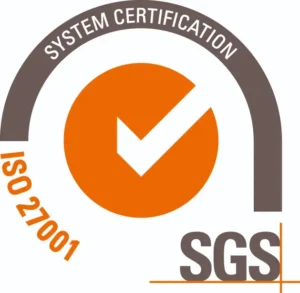Let’s face it – in today’s interconnected world, geopolitical changes have a profound impact on financial systems, regulatory frameworks, and compliance efforts – it is an inevitable reality. For those of us in the Anti-Money Laundering (AML) and Know Your Customer (KYC) space, the stakes are higher than ever. Evolving international relations, sanctions, and regional conflicts have created a dynamic environment that demands vigilance, adaptability, and innovation.
Let’s explore how geopolitical shifts influence AML/KYC and how organisations can proactively respond to stay ahead of risks and regulatory demands.
1. Sanctions: A Moving Target
One of the most immediate effects of geopolitical changes is the imposition or removal of economic sanctions. Countries frequently use sanctions as a tool to influence global politics, deter illicit activities, and address human rights violations. This has a direct impact on financial institutions, which must ensure they do not facilitate transactions involving sanctioned individuals, entities, or countries.
Key Challenges:
- Sanctions lists, such as those maintained by the U.S. Office of Foreign Assets Control (OFAC) or the EU, are updated frequently, sometimes daily. Keeping up with these changes is a significant challenge.
- Complex ownership structures make it difficult to identify entities that are indirectly linked to sanctioned parties.
- Companies operating across multiple jurisdictions face the added complexity of reconciling conflicting sanction regimes.
How to Respond:
- Invest in robust sanctions-screening tools powered by artificial intelligence (AI) to detect links to sanctioned entities in real-time.
- Establish processes to monitor and update internal databases with the latest regulatory changes.
- Train teams to interpret complex sanctions scenarios, such as beneficial ownership or dual-use goods.
2. Cross-Border Transactions and Emerging Risks
Geopolitical shifts often lead to increased scrutiny of cross-border transactions, particularly in regions affected by conflict, corruption, or political instability. For example, the rise of regional tensions can drive illicit financial flows as bad actors exploit weak regulatory systems in unstable areas.
Key Challenges:
- Identifying and monitoring high-risk regions where money laundering, terrorist financing, or sanctions evasion is likely to occur.
- Understanding the nuanced risks associated with local customs, payment methods, and financial systems.
- Adapting to rapidly changing conditions, such as political coups or border closures, that disrupt financial operations.
How to Respond:
- Use dynamic risk assessment models that incorporate geopolitical risk factors, such as corruption indices or conflict alerts.
- Implement enhanced due diligence (EDD) for clients and transactions originating from high-risk regions.
- Collaborate with global intelligence networks and use open-source intelligence (OSINT) to stay informed about geopolitical developments.
3. Beneficial Ownership and Shell Companies
Geopolitical instability often leads to increased use of shell companies and opaque corporate structures to hide illicit financial activities. Identifying ultimate beneficial owners (UBOs) becomes even more critical in such cases.
Key Challenges:
- Complex ownership structures across multiple jurisdictions can obscure the true owners of assets.
- Many jurisdictions still lack transparency in corporate registries, making it easier for criminals to hide behind shell companies.
How to Respond:
- Leverage AI and machine learning tools to analyse corporate structures and uncover UBOs.
- Push for greater transparency and data-sharing agreements between jurisdictions.
- Build partnerships with investigative organisations to enhance due diligence efforts.
4. The Role of Technology in Addressing Geopolitical Risks
Technological advancements are proving to be a game-changer in the AML/KYC space, helping organisations keep pace with geopolitical changes.
Key Innovations:
- Real-Time Monitoring: AI-powered tools enable continuous monitoring of transactions and customer activities, flagging risks as they arise.
- Geospatial Analysis: Identifying financial activities tied to high-risk regions or conflict zones.
- Natural Language Processing (NLP): Scanning news, reports, and social media to identify emerging threats and reputational risks.
Why It Matters: Investing in cutting-edge technology not only ensures compliance but also builds resilience against future geopolitical disruptions.
The Human Factor: Training and Awareness
While technology is essential, the human element remains critical in adapting to geopolitical changes. Compliance teams must be equipped to interpret complex scenarios and make informed decisions.
How to Respond:
- Regularly update AML/KYC training programs to include geopolitical risk assessment.
- Encourage cross-functional collaboration between compliance, risk, and legal teams.
- Foster a culture of continuous learning to stay ahead of emerging trends.
Conclusion: Staying Ahead in an Uncertain World
The intersection of geopolitics and financial compliance is becoming increasingly intricate. For AML/KYC professionals, this means not only keeping up with regulatory changes but also understanding the broader global landscape that drives these changes.
Organisations that embrace advanced technology, dynamic risk management, and proactive training will be better equipped to navigate these challenges and protect themselves from financial crime.
As we move forward, one thing is clear: agility, innovation, and vigilance are no longer optional—they are the foundation of effective AML/KYC programs in an unpredictable world.









